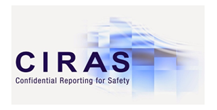STREET WORKS QUALIFICATION REGISTER (SWQR)
QUALIFICATION FOR SUPERVISORS: LA- LOCATION AND AVOIDANCE OF UNDERGROUND APPARATUS
Pre-Requisite:?
Street Works Assessment Standards – Location and Avoidance of Underground Services
Certificate Aim
This certificate has been designed to allow the candidate to demonstrate the skills and knowledge required to successfully locate and avoid underground utilities apparatus and highways services. The candidate will be able to interpret plans and confirm that they correspond with the work site. The candidate will be able to identify different underground utilities apparatus and highways services that are encountered during excavation and understand the hazards, risks and consequences of damaging them. The candidate must be able to select, prepare and use pipe and cable location equipment to identify and mark the location of underground utilities apparatus and highways services.
Location and avoidance of underground apparatus
Learning Outcome 1 Interpret information and plans showing the location of underground apparatus
Assessment criteria:
1.1 inspect the site to confirm that it corresponds with the information and plans provided
1.2 identify visual indications of services being present on the site location
1.3 interpret plans to identify utility and highway services
1.4 confirm that the information recorded on plans is accurate and current for the site
Learning Outcome 2 Understand how to interpret information and plans showing the location of underground apparatus
Assessment criteria:
2.1 define the criteria for checking that plans are current
2.2 identify the types of symbols and legends that are used on plans
2.3 identify how different types of services are shown on plans
2.4 define the importance of marking the site clearly prior to excavation.
Learning Outcome 3 Identify utilities apparatus and highways services encountered during excavation
Assessment criteria:
3.1 identify the underground utilities apparatus and highways services
3.2 identify damage to underground utilities apparatus and highway services.
Learning Outcome 4 Understand how to identify utilities apparatus and highways services encountered during excavation
Assessment criteria:
4.1 identify the different types of underground utilities apparatus and highways services
4.2 identify the distinguishing characteristics of underground utilities apparatus and highways services.
Learning Outcome 5 Identify the hazards and risks associated with underground utilities apparatus and highways services
Assessment criteria:
5.1 conduct a site specific risk assessment to identify the hazards, risks and suitable control measures
5.2 ensure that control measures and contingency plans are in place to reduce the likelihood and severity of consequences resulting from the damage of underground utilities apparatus and highways services.
Learning Outcome 6 Understand the hazards and risks associated with underground utilities apparatus and highways services
Assessment criteria:
6.1 define the information recorded within a site specific risk assessment in relation to the location and avoidance of underground utilities apparatus and highways services
6.2 identify damage to underground utilities apparatus and highways services
6.3 state the potential consequences of damaging underground utilities apparatus and highways services
6.4 define the control measures used to reduce the likelihood and severity of consequences resulting from the damage of underground utilities apparatus and highways services
6.5 state the purpose of contingency plans in relation to damaged underground utilities apparatus and highways services.
Learning Outcome 7 Use pipe and cable location equipment
Assessment criteria:
7.1 select equipment for the pipe and cable location activity
7.2 ensure that the equipment to be used is fit for purpose
7.3 prepare equipment for use
7.4 conduct the search using the appropriate techniques to locate underground utilities apparatus and highways services
7.5 interpret the results of search procedures accurately
7.6 mark the site clearly showing the location of underground utilities apparatus and highways services
7.7 compare the results of searches undertaken with the information on the site plans.
Learning Outcome 8 Understand how to use of pipe and cable location equipment
Assessment criteria:
8.1 define the operational limitations of different pipe and cable location equipment
8.2 state how to select equipment that is fit for purpose
8.3 define the procedure for notifying the relevant authority of discrepancies between search results and site plans
8.4 state the procedure to follow where underground utilities apparatus and highways services cannot be found using pipe and cable location equipment.
Learning Outcome 9 Follow safe working practices
Assessment criteria:
9.1 identify the relevant health and safety regulations, standards and other legislation that must be applied in relation to:
(a) working practices within the construction environment
(b) working practices specific to any practical task that they are required to carry out
9.2 follow current relevant health and safety regulations, standards and other legislation relating to:
(a) working practices within the construction environment
(b) working practices specific to any practical task that they are required to carry out.
Evidence Requirements / Scope
Some terms, used in the assessment criteria, cover a range of situations, as follows:
1. Utilities apparatus includes:
(a) plastic and metallic gas mains and services
(b) plastic and metallic water mains and services
(c) sewers and drains
(d) low and high-voltage electricity cables
(e) telecommunications and television cables
(f) fibre optic cables.
2. Highways services includes:
(a) highway drainage
(b) culverts
(c) land drains
(d) Street lighting and traffic signal equipment
(e) highways/road with special engineering controls.
3. The symbols and legends must cover a minimum of three of the following types:
(a) water
(b) gas
(c) sewers
(d) telecommunications
(e) electricity.
4. Safe working practices should include:
(a) safe use of tools and equipment
(b) use of PPE , including, as necessary: high visibility jacket or waistcoat, hard hat, ear defenders, gloves, protective footwear, waterproof clothing, eye protection visor/goggles, dust mask
(c) use of risk assessment methods to identify and control hazards on site
(d) precautions to minimise danger or inconvenience to highway users
(e) precautions to minimise danger or inconvenience to site personnel
(f) precautions to minimise damage to equipment or apparatus.
5. Regulations, standards and other legislation include:
(a) Health and Safety Guidance 47, Avoiding Danger from Underground Services
(b) Health and Safety Guidance 150, Health and Safety in Construction
(c) Safety at Street Works and Road Works – A Code of Practice.
6. Potential consequences resulting from the damage to utilities apparatus and highways services include:
(a) health and safety hazards including
i. personal injury or death
ii. dangerous situations
(b) disruption of service
(c) disruption of traffic
(d) Damage to third party assets (highway and private property).
7. Equipment used when locating pipes and cables includes:
(a) proprietary pipe and cable location equipment
(b) suitable marking equipment
(c) personal protective equipment.
Assessment Requirements and Guidance
Assessment for this unit consists of practical observations and a multiple-choice knowledge examination to cover the requirements of the learning outcomes.
Current requirements for practical observations, including Assessor and Internal Quality Assurer qualifications and facilities requirements are provided in the HAUC (UK) The Street Works Assessment Strategy.



